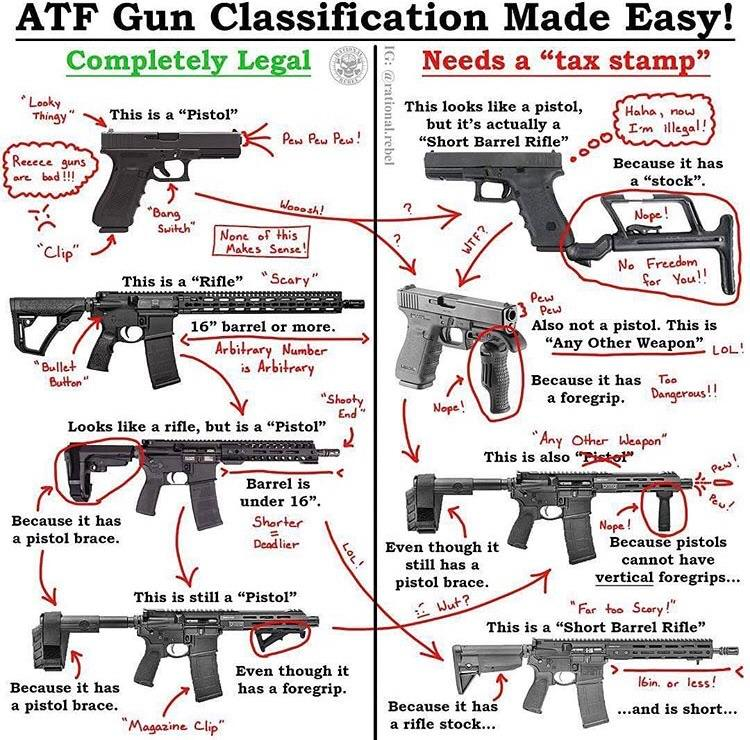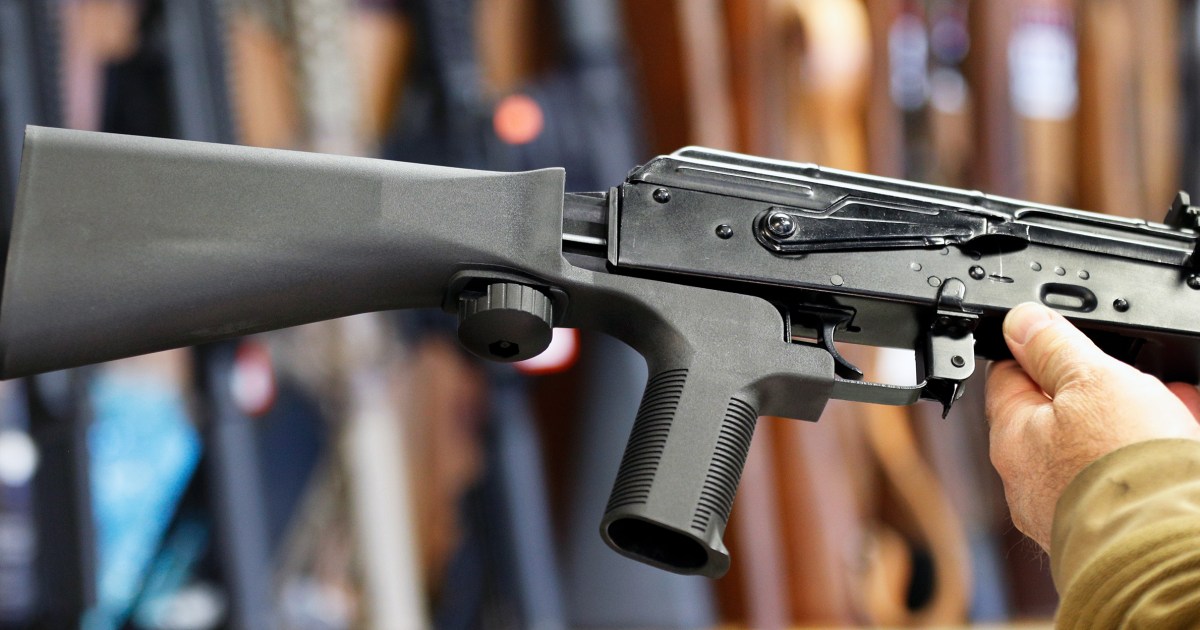The ban was imposed by the Trump administration after the 2017 mass shooting in Las Vegas and is being defended by the Biden administration.
Some Supreme Court justices on Wednesday expressed reluctance to strike down a ban on “bump stocks,” a gun accessory that allows semi-automatic rifles to fire more quickly, although the final outcome remains unclear.
The prohibition was imposed by the Trump administration after the Las Vegas mass shooting in 2017 in which Stephen Paddock used bump stock-equipped firearms to open fire on a country music festival, initially killing 58 people.
The Supreme Court in 2019 declined to block the regulation. The already conservative court has tilted further to the right since then, with conservative Justice Amy Coney Barrett, a Trump appointee, replacing liberal Justice Ruth Bader Ginsburg, who died in 2020.
Conservatives now have a 6-3 majority that has backed gun rights in previous cases.
The 2nd Amendment is the right to bear arms, not bump stocks. If the same gun functions without a bump stock then there is no infringement on the 2nd amendment.
Terrible take. Could be used to justify banning literally all guns except flintlock pistols. You can accomplish the same thing as a bump stock with a piece of string. This is what leads to this nonsense

What do you personally need a bump stock for?
What do you personally need a computer for?
Participating in almost all aspects of modern society.
To ask people why they need bump stocks, silly.
I don’t need a bump stock, I need for federal agencies not to overstep Congress, which is what this is all about. Most folks don’t care about bump stocks, its just a gimmick.
This suit is about MUCH more than bump stocks and has implications across the entire federal government.
No one overstepped Congress. Congress banned machine guns, the Bureau of Alcohol, Tobacco and Firearms, one of whose jobs includes regulating firearms, classified bump stocks as something that can turn a semi-auto weapon into an auto weapon and enforced the decision of Congress.
If Congress wants you to have bump stocks then Congress can pass a law saying so and there will be no question.
I don’t. Good thing rights aren’t based on a personal need
Good that we got it figured out that you personally don’t need a bump stock. Now, who does need a bump stock?
I see you missed the point entirely. Typical
Why are you avoiding the question?
Because it’s completely irrelevant
It gets even dumber than that, as there are exceptions (and exceptions to the exception) for almost every pictured example. The top SBR Glock could be still a pistol if the rear protruding portion was just a tube to attach an approved brace design. The AOW Glock pictured below that could have a vertical attachment up front as long as that attachment held a spare magazine in it, because by definition and precedent, a spare mag holder cannot be a forward grip, even though it can serve the function of being gripped.
Don’t need to worry about bump stocks if you don’t have guns to attach them to.
The summary is a horrible summation of the article, which itself is a lackluster summation of the actual issue.
What is actually being litigated is the fact that definitions in enabling legislation, such as the NFA, have meaning. Words like “machine gun” have statutory definitions that the President does not have the authority to selectively reinterpret via executive order, omission, or any other channel or method. If Congress would like the definition of “machine gun” to include semi-auto rifles equipped with these particular pieces of plastic, they can amend the NFA.
Same goes for the brace rule and the frame and receiver rule. The ATF does not have legislative authority and the Courts have a duty to check their power in this area.
deleted by creator





